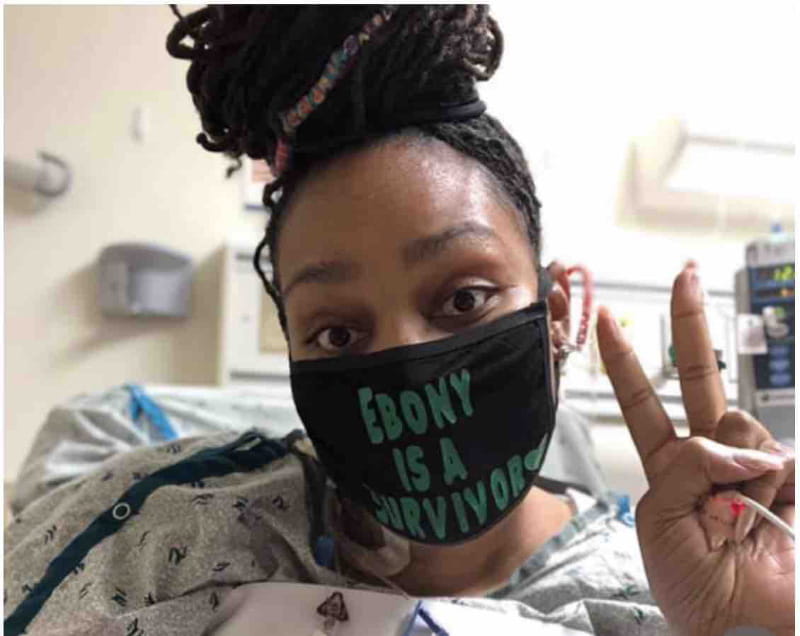After childbirth came heart failure – and later, a new heart
By Lindsey Giardino, American Heart Association News

Ebony Smith-Thomas was juggling the demands of a hungry 2-month-old boy while keeping her 11-year-old son and two teenage nieces entertained when her air conditioning went out.
The humidity of a St. Louis evening in May was too much to bear, so she packed up the kids and drove from the south side of town to her mom's house on the north.
All night, Debbie Thomas-Smith heard her daughter coughing. It was dry, powerful and persistent. In the morning, Debbie told Ebony she needed to see a doctor. Debbie feared that Ebony might have walking pneumonia.
Ebony went to an urgent care facility. Tests showed fluid in her lungs, indicating she might have pneumonia. To be sure, she was sent to the emergency room. She underwent another X-ray. Then a technician came in with an ultrasound machine.
"What are you doing with that?" Ebony asked. "I just had a child. I'm not pregnant."
"It's for your heart," the tech told her.
The ultrasound revealed that Ebony had peripartum cardiomyopathy, an uncommon form of heart failure. It can happen toward the end of pregnancy or – as in Ebony's case – in the months following delivery.
Heart failure means that the heart is no longer able to efficiently pump blood to the rest of the body. A healthy heart pumps blood, known as the ejection fraction, at between 50% and 70%; heart failure occurs if the ejection fraction is 40% or less. Sometimes people with a higher ejection fraction of 50% or more may have a different type of heart failure. Ebony's ejection fraction was 27%.
She spent the next several years undergoing various procedures and taking different medications in hopes of strengthening her heart.
Her doctors began discussing the possibility of a heart transplant.
In October 2019, five years after being told she was in heart failure, Ebony went on the transplant waiting list. She felt like her life was in limbo. Hope lived next to fear of the unknown.
"I would tell her, 'You're still here. You still have a chance, and you're not going to give up,'" Debbie said.
On Aug. 18, 2020, Ebony got the call that she'd receive a new heart the next day.
The surgery took nearly 23 hours. Once Ebony regained consciousness, Debbie sensed her daughter was like a new person.
"She was bubbly and happy and clearheaded," Debbie said.

More than four years later, Ebony has been through more health challenges: a blood clot in her new heart that required open-heart surgery, a hysterectomy and a double mastectomy. Yet she's come away from it all with an appreciation for being alive.
While some people complain about getting older, Ebony considers aging a privilege.
"It's a blessing to wake up every day," she said. "Whether I'm in low spirits, good spirits or sick spirits, I'm glad God put me on a wake-up call every day."

Stories From the Heart chronicles the inspiring journeys of heart disease and stroke survivors, caregivers and advocates.





